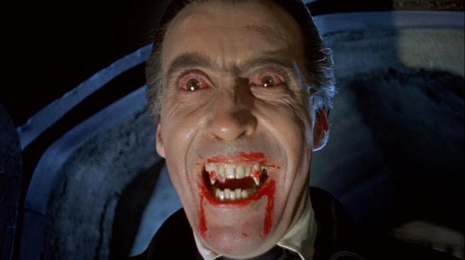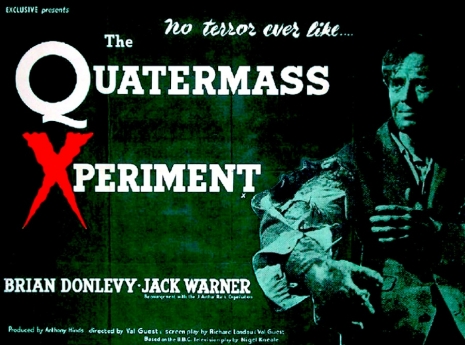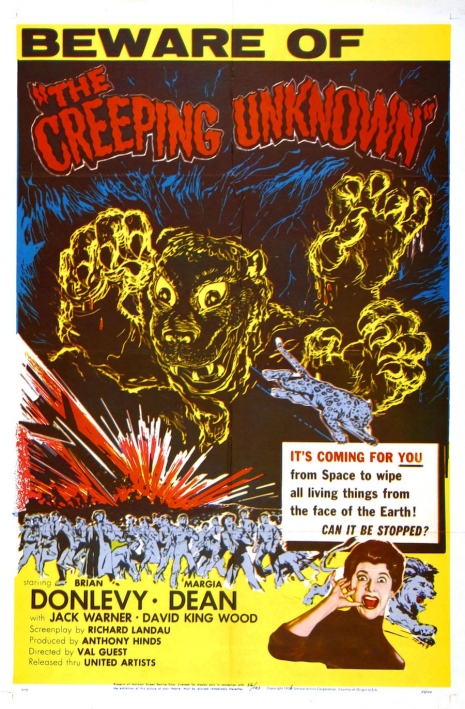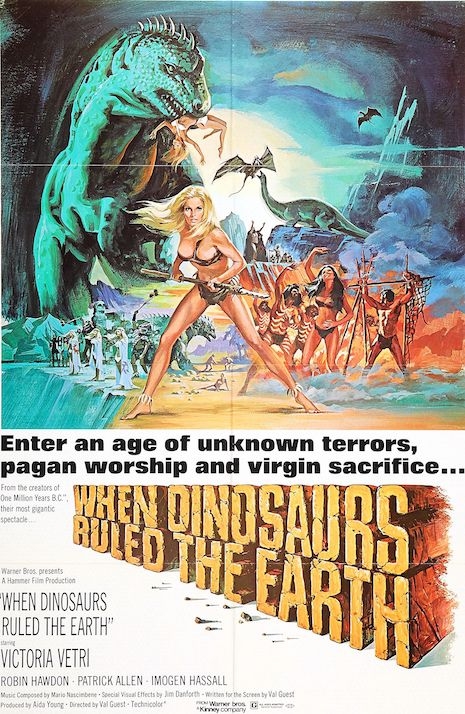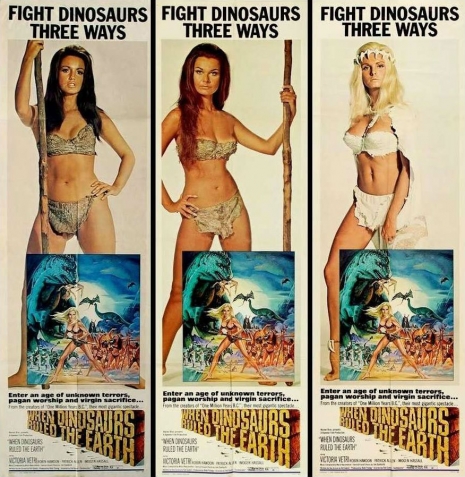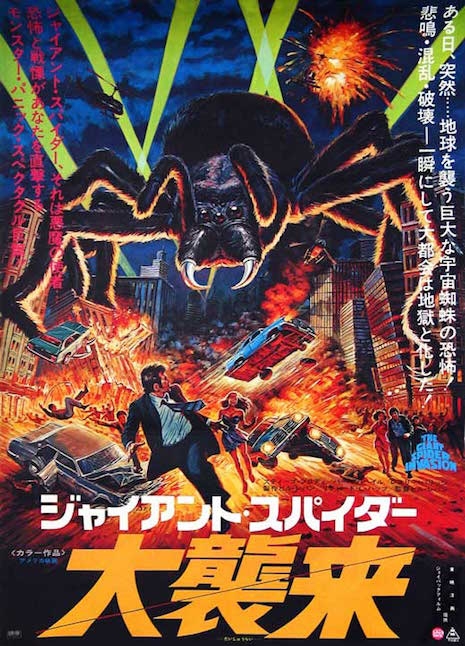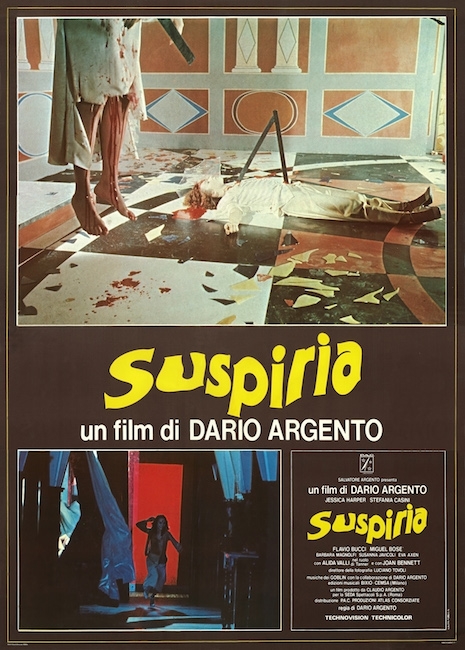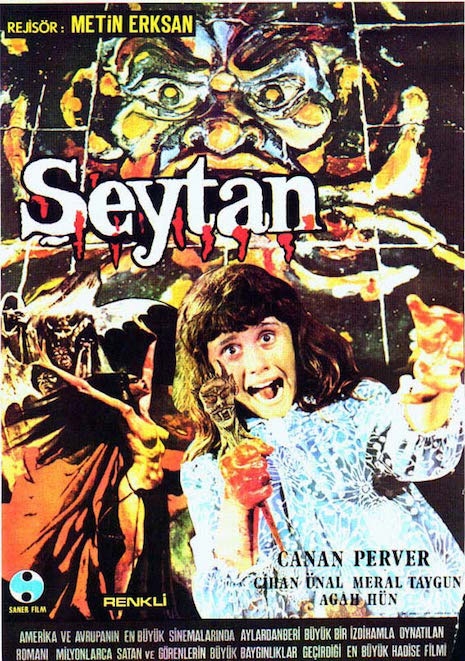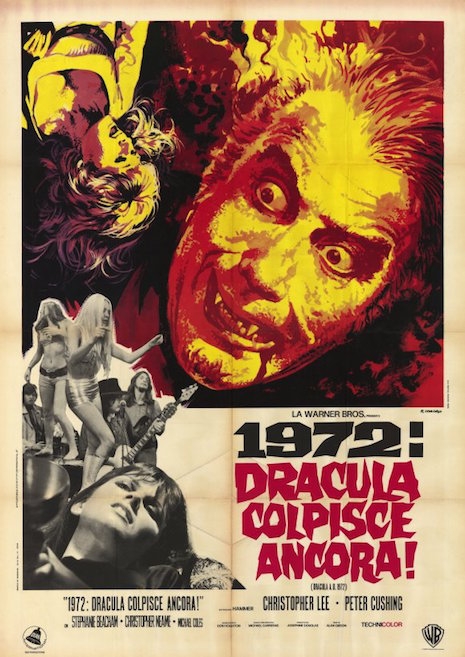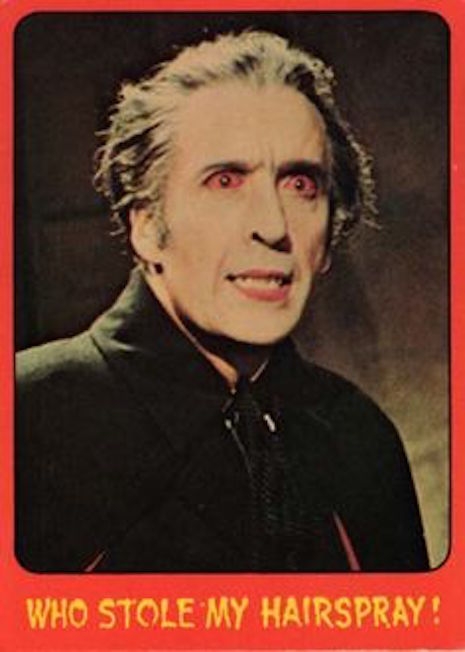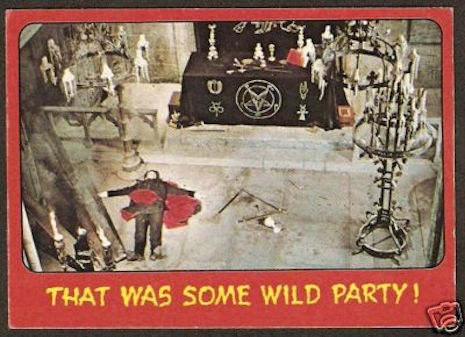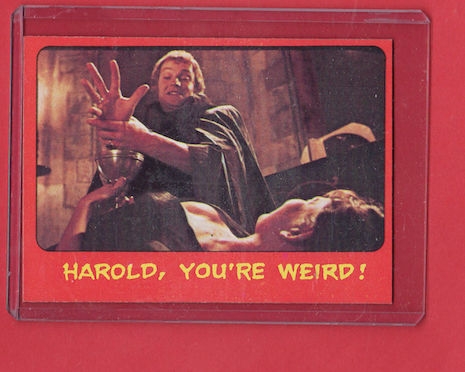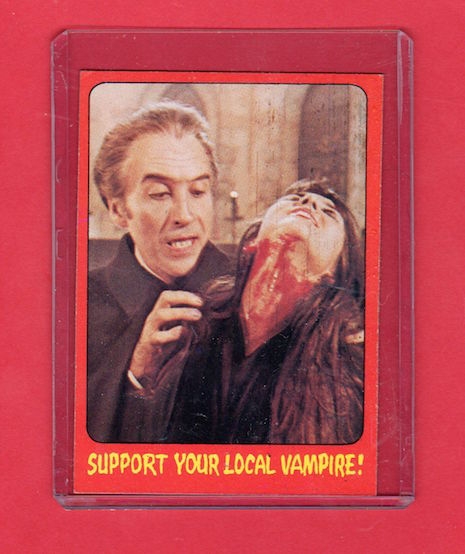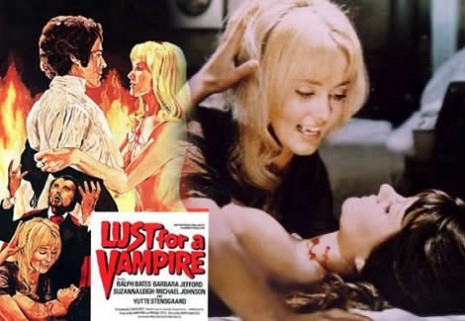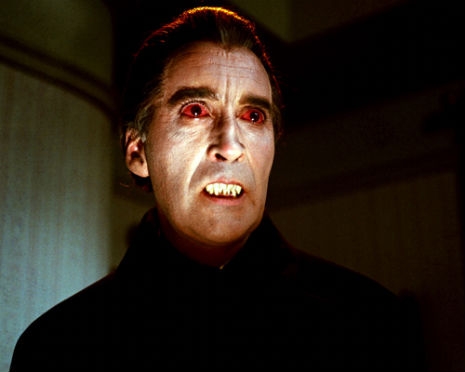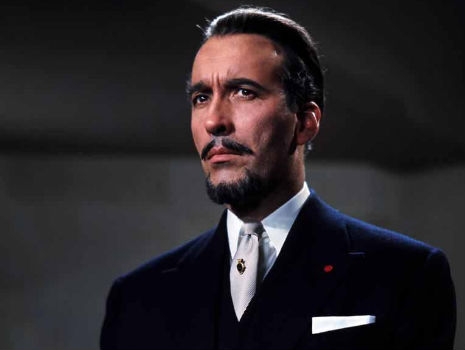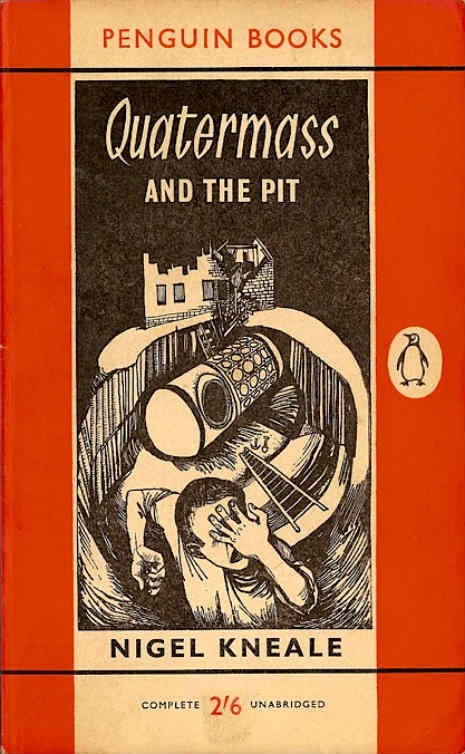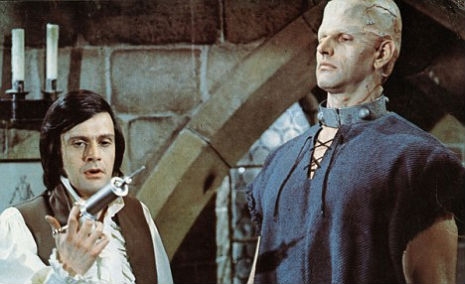
A shot of Mary (pictured on the left) and Madeleine Collinson on the set of Hammer’s 1971 film ‘Twins of Evil.’
Before twin sisters Madeleine and Mary Collinson appeared in Hammer’s 1971 film Twins of Evil, they would become the very first twins to pose for Playboy magazine as the “Misses October” for the October 1970 issue. According to Madeleine, the occurrence of twin births was incredibly common for their family noting that nearly every woman in the Collinson clan had given birth to twins “one time or another.” In fact, Madeleine and Mary’s mother, a former model, would later give birth to a second set of twins.
Madeleine Collinson was apparently a big fan of horror films which made her a natural fit to play Frieda Gellhorn, the “evil” twin in Hammer’s 1971 film Twins of Evil. Her sister Mary would play opposite her twin as the demure, virginal Mary Gellhorn. The sisters had just arrived in London two years earlier from Malta, where they did some modeling in their early teens as well as a few television commercials. Mary would be the first to leave Malta and head to London followed by Madeleine when they were just seventeen. They were instantly hounded by photographers and filmmakers hoping to capitalize on the twins’ unique good looks. Success came quickly to the twins and after being invited to attend a party in London to hang out with other European movers and shakers they met Victor Lownes—Hugh Hefner’s right-hand man and Playboy’s managing director. According to London high-society mythology, Lownes convinced the girls to move into his mansion in London and then sent them off to the original Playboy Mansion in Chicago to meet Hef and pose for the magazine. As I mentioned previously, the twins would earn the distinction of being the very first set of twins to ever appear in Playboy. Over 800 photos of the girls were taken for their Playboy spread, a new record when it came to photoshoots for the magazine.
Madeleine and Mary would appear in a handful of other films though it would be their joint appearance on The Tonight Show with Johnny Carson followed by their roles in Twins of Evil that would make them a hot commodity. Most if not all opportunities that were presented to the girls involved them appearing together, not as individuals. This scenario was less than appealing to the twins, and in 1972 both Madeleine and Mary moved to Milan and removed themselves from the limelight ending their brief but spectacular brush with fame. I’ve posted photos of the gorgeous twin sisters in character from Twins of Evil (though only Madeleine played a vampire chick in the flick), and a few shots from their appearance in Playboy, making it safe to assume much of what follows contains nudity and is NSFW.
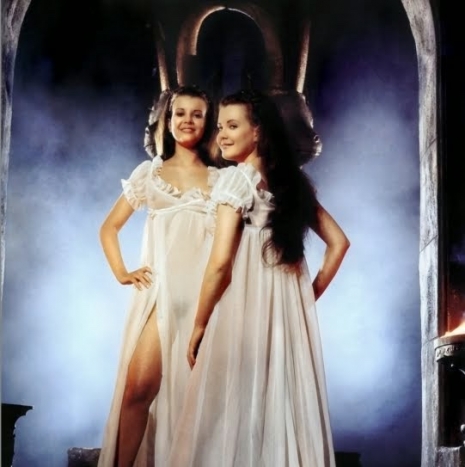
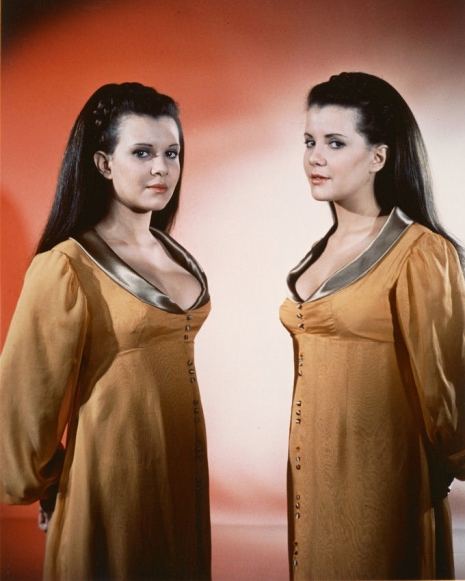
More after the jump…






